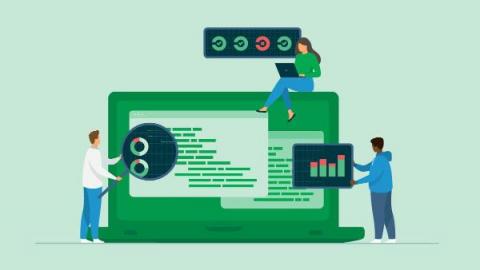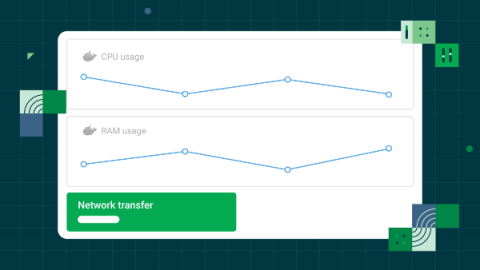Operations | Monitoring | ITSM | DevOps | Cloud
CircleCI
Observability versus monitoring in software development
To supervise the behavior of distributed applications and track the origin of service failures and downtime, developers often use traditional monitoring technologies and tools. However, this approach can fall short in its ability to measure the overall health of modern cloud-native architectures, which can span multiple hosting environments and encompass hundreds of microservices.
Continuous integration for Angular applications
Automated testing is the foundation of your continuous integration practice. Automated testing clarifies the status of build processes for your team’s applications, ensures that tests run on every commit or pull request, and guarantees that you can make quick bug fixes before deploying to the production environment. In this tutorial, I will show you how to automate the testing of an Angular application.
How to find and monitor engineering metrics for team success
Welcome to the engineering metrics guide for team success. Engineering metrics are data that teams can use to make informed decisions and operate at maximum efficiency. Don’t use CI on your team? Learn why continuous integration is key to increasing deployment frequency.
Automate the deployment of Angular apps to Firebase
Developers use JavaScript frameworks like Angular, React, and Vue.js to build every kind of single page application, from simple to complex. By separating JavaScript and CSS, frameworks let dev teams structure applications in modular chunks of code that carry out a single function. That is great, but once your application is ready for deployment to production, you will need a command to compile and bundle the separate files into a single one.
Discover 2022 DevOps trends with CircleCI data report
If you’re like many of our customers, the phrase software supply chain entered your lexicon this year. You’ve begun to feel the complexities and vulnerabilities of that supply chain. You’ve connected the dots between more reliable software delivery and business success. You’re recognizing the gains developer efficiency can have on profitability.
Predict the cost of IP ranges with new enhancements to the Resources tab
One of our most requested and popular features, IP ranges for the Docker executor, recently became available to all customers on a Performance or Scale plan. With IP ranges, you can route job traffic through an IP address that is verifiably associated with CircleCI. This enables your team to meet compliance requirements by limiting the connections that communicate with your infrastructure. With any new feature, you want to know how much it’s going to cost your team.
CircleCI acquires test intelligence platform Ponicode
Today we are pleased to announce that CircleCI has acquired Ponicode, a Paris-based AI engine for analyzing source code, with the goal to help developers produce better code in their local development environment. Ponicode caught our attention with their dedicated focus to helping developers handle their least favorite tasks — the toil surrounding writing code — such as authoring tests, commenting code, analyzing code quality, and more.
You don't need to migrate from Jenkins. Start building beside it.
Ten years ago, tools like Jenkins were first-class automation platforms for your CI pipelines. The jump from lower-level tools and custom scripts to tools like Jenkins created dramatic improvements. Now, a new generation of web-based tools are available. They provide a platform for the next leap forward for product build automation. This long history means that many mature organizations use Jenkins for CI.
Troubleshooting CircleCI webhooks
CircleCI webhooks open up a variety of exciting use cases, from data logging and integrations with third-party monitoring and observability solutions to setting up your own custom dashboards to monitor pipeline health. To ensure that you can properly monitor events, resolve authentication errors, and also access the information contained within them, you need a reliable process to debug any errors you might encounter.










